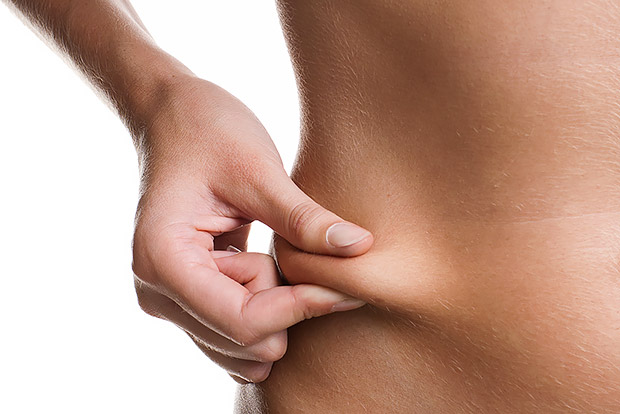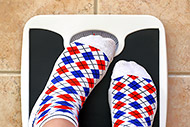
While excess weight can have negative impacts on your health, research shows that where your body stores fat may be a better indicator of your overall disease risk.
Types of Body Fat
Visceral fat: This is fat stored around vital organs such as the heart, liver, and pancreas. Visceral fat is not visible and it is possible for individuals who appear thin to carry this type of fat.
Subcutaneous fat: The visible fat that is stored just under the skin. This is the type of fat assessed with skinfold calipers when estimating body fat percentage.
Visceral Fat and Health
Research shows that visceral fat is linked to insulin resistance and increased production of LDL (bad) cholesterol and triglycerides, increasing the risk of heart disease and diabetes. Belly fat is a mix of both visceral and subcutaneous fat, which is why carrying weight around the middle of the body (apple body shape) puts you at increased health risk. While maintaining a healthy weight is important, carrying weight around the hips and thighs (pear body shape) is less of a health concern because these stores are thought to be the less dangerous subcutaneous fat.
Monitoring Visceral Fat
An accurate measure of visceral fat is not possible without expensive medical testing with a CT scan or MRI, but a simple waist circumference measure provides an indirect assessment. Women with a waist circumference of 35 inches (88 centimeters) or greater and men with a waist circumference of 40 inches (102 centimeters) or greater are at increased risk for chronic disease. The waist-to-hip ratio is another common measurement used to assess abdominal fat. Men should aim for a ratio of less than 1.0 and women should aim for a ratio under 0.8.
Reducing Visceral Fat
While weight loss helps you reduce fat all over the body, exercise appears to target and decrease visceral fat. If you aren’t exercising as part of your weight loss plan, it is time to start. Even if you are not overweight, exercise keeps you metabolically fit and reduces hidden visceral fat. Aim for at least 150 minutes of exercise each week.



 8 Ways to Overcome a Lack of Support for Weight Loss
8 Ways to Overcome a Lack of Support for Weight Loss
 6 Tips for Controlling Portions
6 Tips for Controlling Portions
 Some People Dream of Success
Some People Dream of Success
 5 Breakfasts Under 300 Calories
5 Breakfasts Under 300 Calories
 4 Things to Know About Negative Calorie Diets
4 Things to Know About Negative Calorie Diets
 Healthy Ways to Motivate Your Friends
Healthy Ways to Motivate Your Friends
 How to Make Healthy Restaurant Choices
How to Make Healthy Restaurant Choices
 How Often to Weigh
How Often to Weigh

 Pinterest
Pinterest RSS Feed
RSS Feed